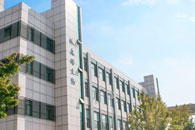
2024-02-18
各位老师大家好~上次小派为大家介绍了“类器官+单细胞转录组测序 ”在指导类器官培养、研究生长发育、探究病毒感染机制的详细发文思路《详见强强联合:类器官+单细胞转录组测序(一)》,本周我们继续挖掘“类器官+单细胞转录组测序 ”在器官移植、疾病易感基因筛选上的应用。
值此新春佳节之际,小派也祝各位老师在新的一年里事业节节高升、文章每投必中、龙年万事顺意~
应用04 类器官移植治疗 文章题目:Engraftment of allogeneic iPS cell-derived cartilage organoid in a primate model of articular cartilage defect[1] 发表期刊:Nature Communications 发表时间:2023.02 研究背景:诱导多能干细胞(iPSCs)是一种很有前景的异体软骨移植资源,可用于治疗不能自发愈合的关节软骨缺损。由于关节软骨的修复能力有限,故关节软骨的局灶性损伤或侵蚀经常导致骨关节炎等病症,迄今为止还没有修复软骨的药物。通过将iPSCs分化成软骨细胞,然后将其转移到3D培养中,使iPSCs衍生的软骨细胞产生并在自身周围积聚细胞外基质(ECM),形成软骨组织颗粒,从而成功地用iPSCs制造出了由软骨细胞和 ECM 组成的软骨。由于iPSCs具有自我更新活性,异体iPSCs衍生的软骨器官组织理论上可以无限量地生产,并移植到不同的患者体内,从而解决了异体软骨的相关问题,如供体稀缺、疾病传播风险、供体间软骨质量差异等。 类器官来源及种类: 未分化的食蟹猴iPSCs(cyiPSC)、cyiP5-Cart(移植前cyiPS-Cart)、完整的关节软骨(cyAC)、空白组软骨缺损中形成的纤维组织(cyFT),以及移植组软骨缺损中的cyiPS-Cart(移植17周后的cyiP5-Cart)。 研究思路: 研究结果: 在这项研究中,研究人员在不使用免疫抑制药物的情况下,在灵长类动物模型中分析了主要组织相容性复合体 (MHC) 不匹配的 iPS 细胞衍生软骨类器官的同种异体移植。 研究人员将食蟹猴iPS 细胞 (cyiPSC) 分化为软骨细胞,以创建 cyiPSC 衍生的软骨类器官 (cyiPS-Cart)。然后研究人员以同种异体方式将cyiPS-Cart移植到食蟹猴膝关节表面的软骨缺损处。cyiPS-Cart 移植物的单细胞 RNA 测序 (scRNA-seq) 和分子分析揭示了参与细胞分化的分子通路,这些通路在移植后将 cyiPS-Cart 重塑为关节软骨。 图1. 食蟹猴软骨缺损移植模型构建及移植前后单细胞测序分析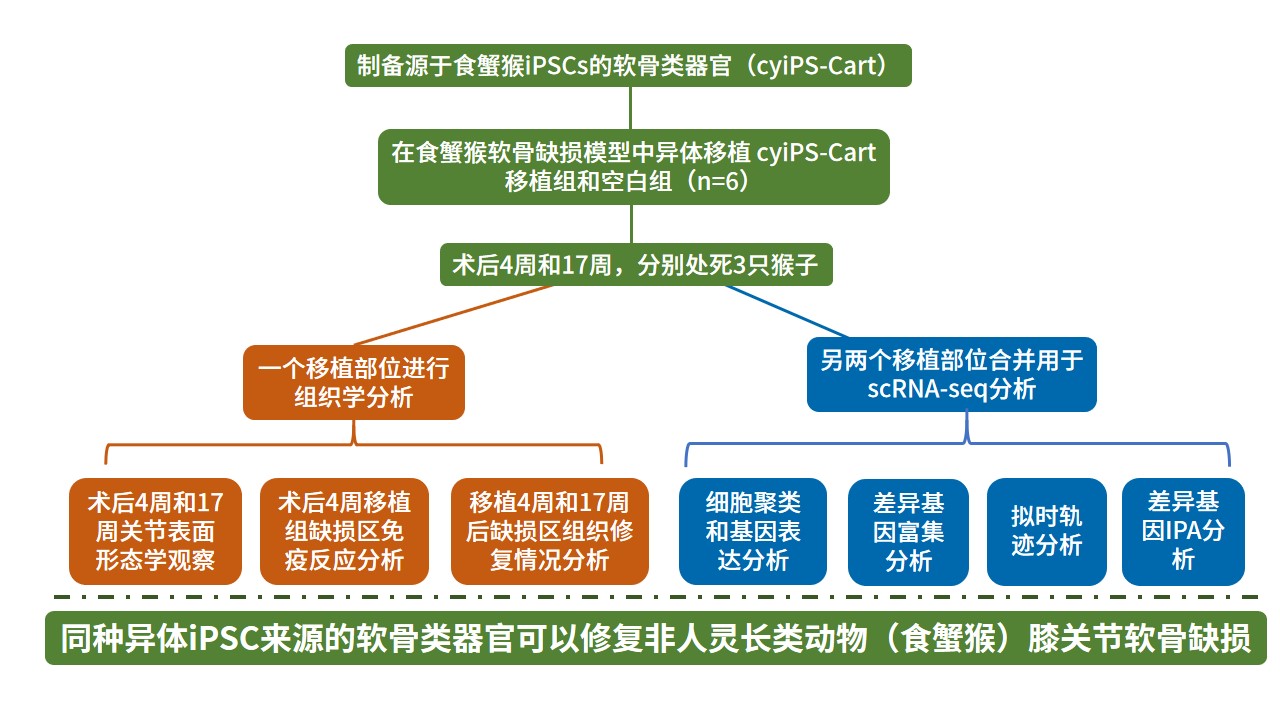
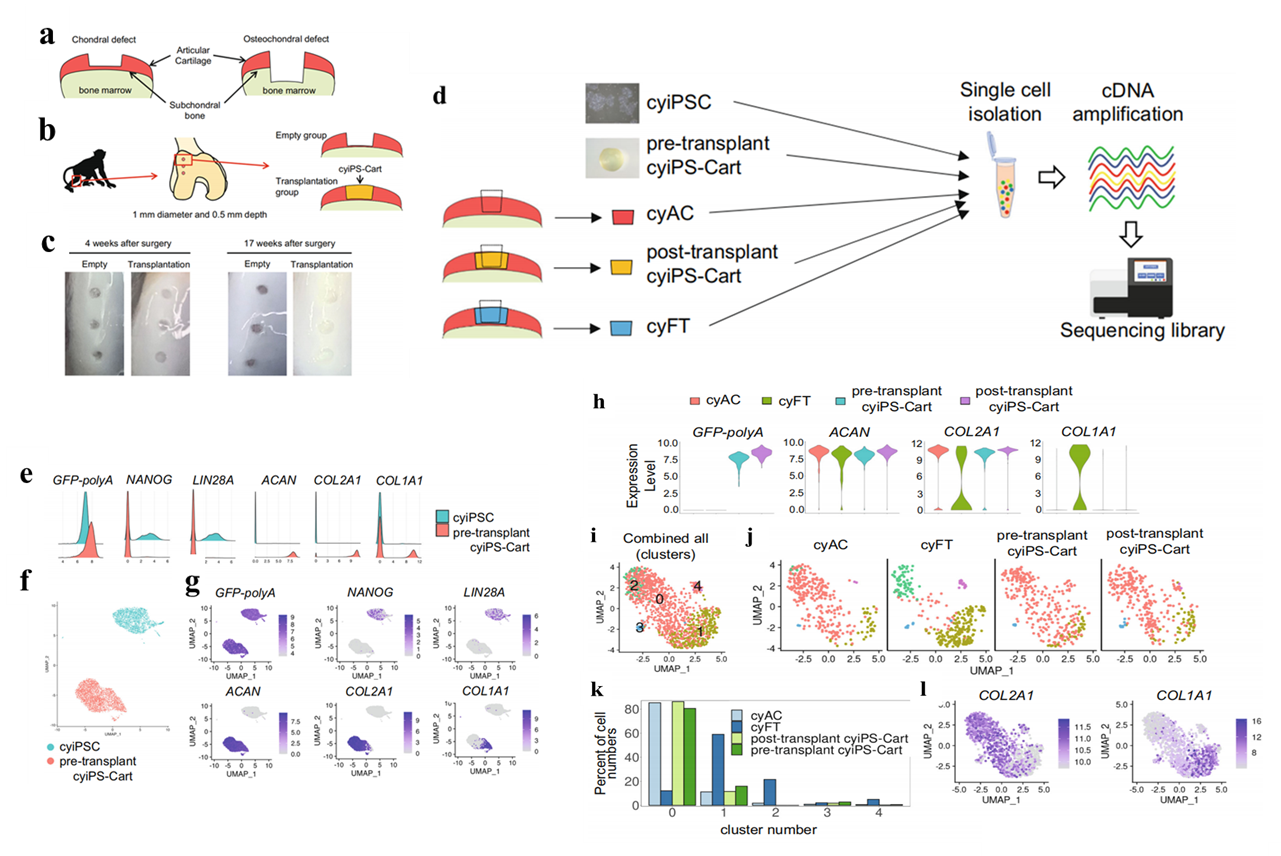
应用05 疾病易感基因筛选 文章题目:Single-cell brain organoid screening identifies developmental defects in autism[2] 发表期刊:Nature 发表时间:2023.09 研究背景:人类大脑皮层的发育是一个独特且复杂的过程,这可能导致人类相比于其他物种更容易患上神经发育障碍(NDD)。然而神经发育障碍,例如自闭症谱系障碍(ASD),一般只有在出生后才能被诊断出来。想要在人源背景下分析与ASD相关的发育和细胞类型特异性缺陷也往往仅限于神经成像和死后的组织研究。以往的ASD基因的共表达网络分析表明,与ASD相关的发育缺陷可能在胎儿期就已产生,但目前也没有更好的办法去进行研究。最近CRISPR筛选技术+类器官+单细胞转录组结合的方法可以允许对人类神经发育障碍(NDD)进行深入探究,但这类方法尚未在类器官中得到充分的探索。 研究思路: 研究结果: 作者团队开发了一种新系统来筛选与自闭症相关的一整套关键转录调控基因。这一新系统被命名为——“CHOOSE”(CRISPR-human organoids-scRNA-seq),在该系统中,人类大脑类器官中的每个细胞最多携带一个特定的自闭症基因突变。研究人员可以在单细胞水平上追踪每个基因突变的影响,并绘制每个细胞的发育轨迹(图1)。通过CHOOSE系统可以在一个实验中看到每一个基因突变产生的结果,与传统方法相比大大缩短了分析时间。使用CHOOSE系统,研究团队发现,已知与自闭症高风险相关的36个基因突变导致发育中的人类大脑中特定的细胞类型的变化,并发现了导致关键转录变化的基因调控网络(GRN),这是一组相互作用以调控特定细胞功能的分子调节器(图2)。除了为自闭症研究提供眼前一亮的新见解外,研究团队还强调了CHOOSE系统的通用性和可转移性,即这项技术可以被广泛应用于大脑类器官以外,以研究各种疾病相关基因。通过这项新技术,科学家和临床医师获得了一种稳健且精确控制的高通量筛查工具,大大缩短了分析时间,并为了解疾病机制提供了宝贵见解。 图1. 人脑类器官中ASD风险基因多路筛选的选择系统 图2. ASD风险基因扰动导致的基因表达和调控网络失调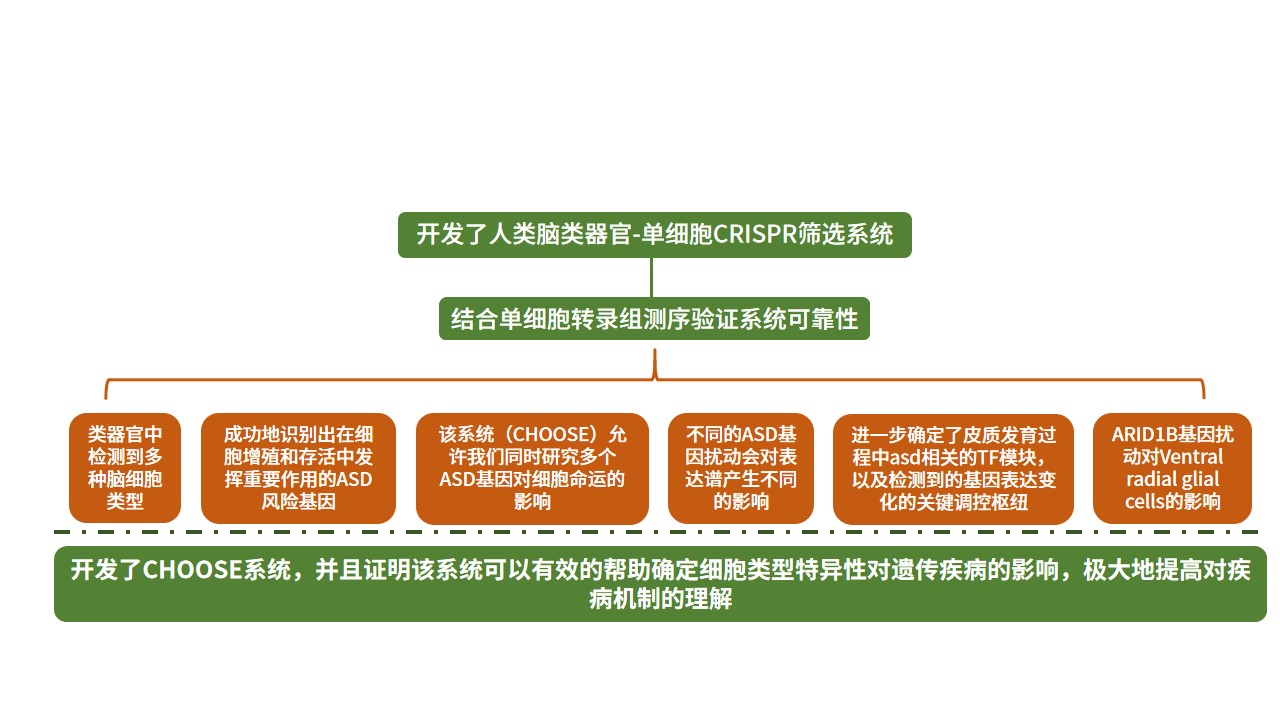
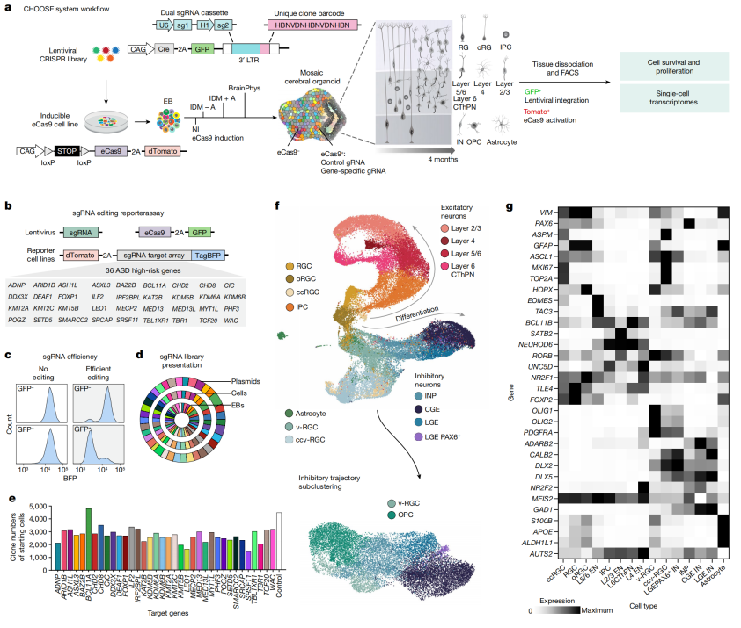
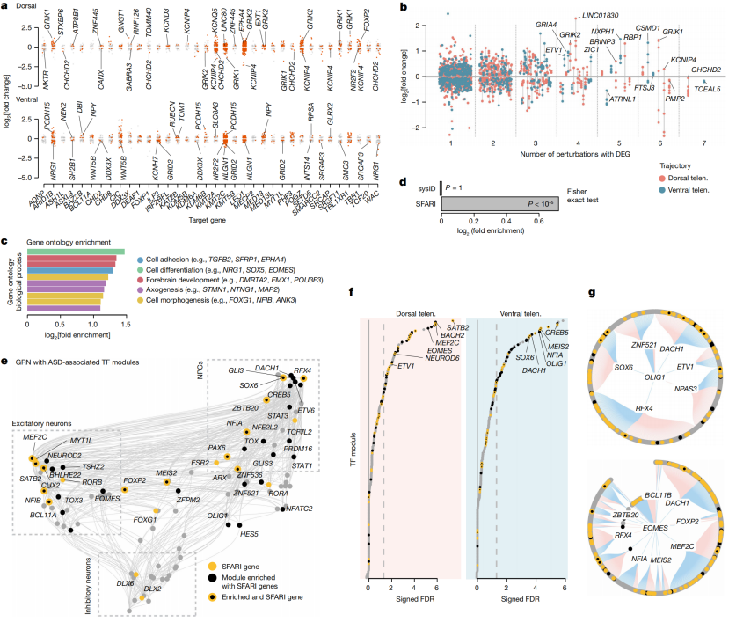
那除了以上这些文章,“类器官+单细胞转录组”的文章还有很多,以下是我们检索的部分文章列表,各位老师可按需下载~ 发表时间 文献题目 期刊 影响因子 2023 Cochlear organoids reveal transcriptional programs of postnatal hair cell differentiation from supporting cells Cell Reports 9.995 2023 Integrative analysis of single-cell RNA-seq and ATAC-seq reveals heterogeneity of induced pluripotent stem cell-derived hepatic organoids iScience 5.8 2022 Modeling Human Thyroid Development by Fetal Tissue-Derived Organoid Culture Advanced Science 15.1 2023 Identification of target cells of human papillomavirus 18 using squamocolumnar junction organoids Cancer Science 5.7 2023 Single-cell transcriptomic analysis of corneal organoids during development Stem Cell Reports 5.9 2023 Single-cell brain organoid screening identifies developmental defects in autism Nature 64.8 2023 Zika virus targets human trophoblast stem cells and prevents syncytialization in placental trophoblast organoids Nature Communications 16.6 2022 Patient-Derived Organoids from Colorectal Cancer with Advanced Science 15.1 Paired Liver Metastasis Reveal Tumor Heterogeneity and Predict Response to Chemotherapy 2022 Mex3a marks drug-tolerant persister colorectal cancer cells that mediate relapse after chemotherapy Nature cancer 22.7 2019 Single-cell analysis reveals congruence between kidney organoids and human fetal kidney Genome Medicine 15.2 2024 Kidney organoid models reveal cilium-autophagy metabolic axis as a therapeutic target for PKD both in vitro and in vivo Cell Stem Cell 23.9 2020 Recapitulation of SARS-CoV-2 infection and cholangiocyte damage with human liver ductal organoids Protein & cell 21.1 2020 Progenitor identification and SARS-CoV-2 infection in human distal lung organoids Nature 64.8 2023 A multi-organoid platform identifies CIART as a key factor for SARS-CoV-2 infection. Nature Cell Biology 21.3 2023 Single-cell brain organoid screening identifies developmental defects in autism. Nature 64.8 2022 Human prefrontal cortex gene regulatory dynamics from gestation to adulthood at single-cell resolution. Cell 64.5 2022 Systematic evaluation of colorectal cancer organoid system by single-cell RNA-Seq analysis Genome Biology 12.3 2023 Organoid-based single-cell spatiotemporal gene expression landscape of human embryonic development and hematopoiesis Signal Transduction and Targeted Therapy 39.3 2023 Mimicking Tumor Cell Heterogeneity of Colorectal Cancer in a Patient-derived Organoid-Fibroblast Model Cellular and Molecular Gastroenterology and Hepatology 7.2 2023 Key Genetic Determinants Driving Esophageal Squamous Cell Carcinoma Initiation and Immune Evasion Gastroenterology 29.4 2023 Engraftment of allogeneic iPS cell-derived cartilage organoid in a primate model of articular cartilage defect Nature Communications 16.6 2023 An oncogenic phenoscape of colonic stem cell polarization Cell 64.5 2023 Human ureteric bud organoids recapitulate branching morphogenesis and differentiate into functional collecting duct cell types Nature Biotechnology 46.9 2023 Multimodal spatiotemporal phenotyping of human retinal organoid development Nature Biotechnology 46.9 2023 Single-cell profiling of GP2-enriched pancreatic progenitors to simultaneously create acinar, ductal, and endocrine organoids Theranostics 12.4 滑动查看~
派森诺生物具有丰富的类器官样本单细胞解离和分析经验,欢迎咨询、合作~ 参考文献: [1]Abe K, Yamashita A, Morioka M, et al. Engraftment of allogeneic iPS cell-derived cartilage organoid in a primate model of articular cartilage defect. Nat Commun. 2023;14(1):804. [2]Li C, Fleck JS, Martins-Costa C, et al. Single-cell brain organoid screening identifies developmental defects in autism. Nature. 2023;621(7978):373-380.